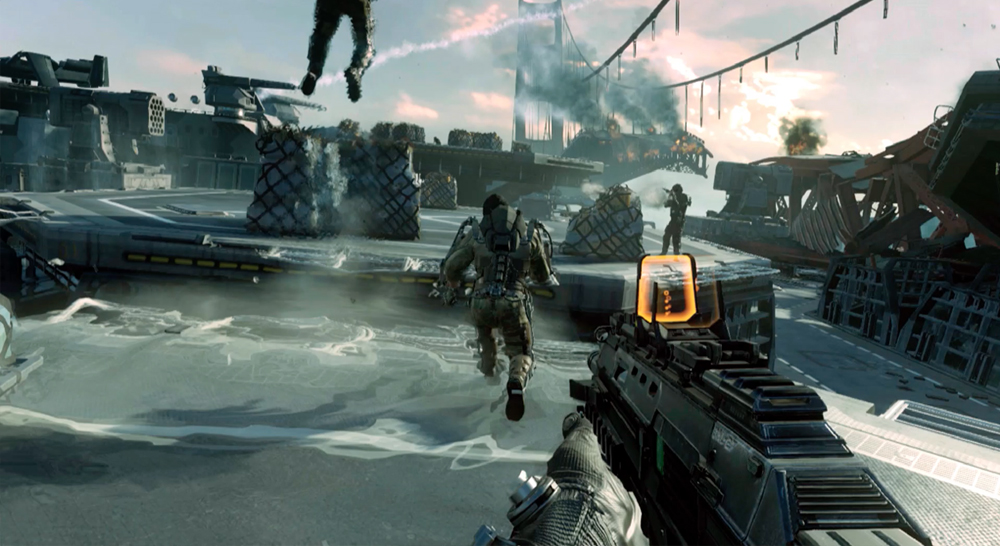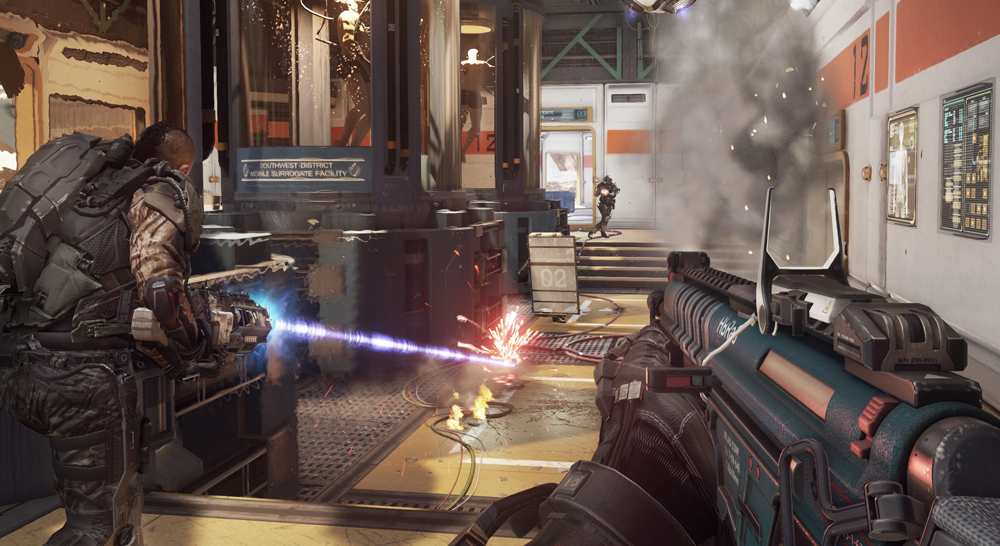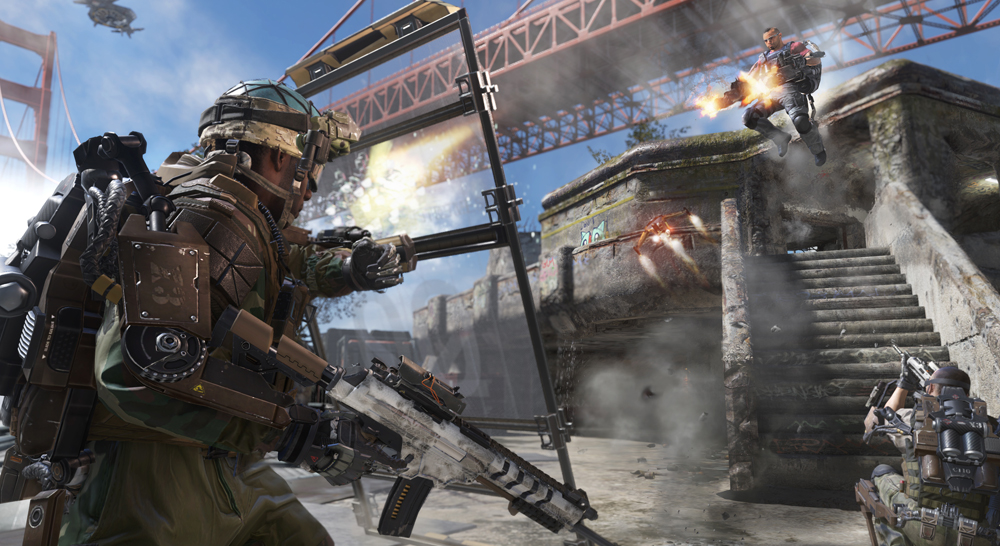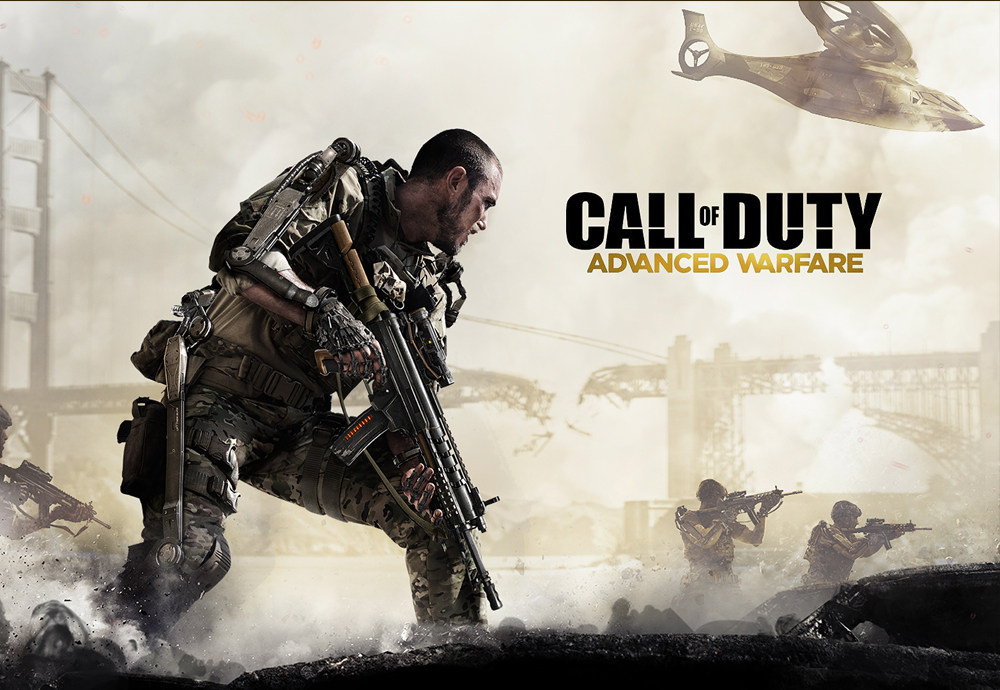Gameplay
The topics and themes of Advanced Warfare’s futuristic single-player story are lent a gravity by their reflection of contemporary real-world news: weapons of mass destruction, a dysfunctional Congress, growing private militaries, and American interventionism. It’s delivered with Call of Duty’s typical over-the-top bravado, but there’s a layer of truth beneath it all that’s genuinely scary.
 Actors Troy Baker and Kevin Spacey nail their roles as player character Mitchell and Atlas Corporation President Jonathan Irons, respectively. Mitchell is gruff and reserved after a personal loss, but unquestionably dangerous and loyal to those who remain. Irons speaks with unwavering confidence; he’s the kind of charismatic bad guy I can’t help but like. These characters, and the rest of the cast, are brought to life with some of the best character models and facial animations I’ve seen. Pores, hair, and creases in skin are all rendered in great detail, to the point where I knew, just by seeing how a character’s face displayed shock and horror, that bad news was coming.
Actors Troy Baker and Kevin Spacey nail their roles as player character Mitchell and Atlas Corporation President Jonathan Irons, respectively. Mitchell is gruff and reserved after a personal loss, but unquestionably dangerous and loyal to those who remain. Irons speaks with unwavering confidence; he’s the kind of charismatic bad guy I can’t help but like. These characters, and the rest of the cast, are brought to life with some of the best character models and facial animations I’ve seen. Pores, hair, and creases in skin are all rendered in great detail, to the point where I knew, just by seeing how a character’s face displayed shock and horror, that bad news was coming.
Those faces, as well as everything else, are far less detailed on the PlayStation 3 and Xbox 360 than on PlayStation 4, Xbox One, and PC. Lighting is flatter and textures are less defined, and I didn’t get the same “wow” impact out of Advanced Warfare’s excellent looking weapons, environments, and characters on those platforms. More importantly, though, movement and shooting feel just as fast and fluid on old-gen consoles as they do on modern machines.
 The biggest hindrance to Advanced Warfare’s story is the way it fails to establish its characters’ human relationships. For instance, the earliest interaction we see is Mitchell and a fellow Marine; we’re told the two are inseparable brothers in arms who’ve served together for months, but some of their conversations seem as though they’ve just met, and come off as artificial exposition. The same thing happens when Irons gives Mitchell a tour of Atlas headquarters — there’s no way Mitchell wouldn’t already know all about the world’s biggest mercenary army. And, like most Call of Duty campaigns, this one ends about six hours later with a confusing, cheesy moment that doesn’t quite tie off Advanced Warfare’s story threads.
The biggest hindrance to Advanced Warfare’s story is the way it fails to establish its characters’ human relationships. For instance, the earliest interaction we see is Mitchell and a fellow Marine; we’re told the two are inseparable brothers in arms who’ve served together for months, but some of their conversations seem as though they’ve just met, and come off as artificial exposition. The same thing happens when Irons gives Mitchell a tour of Atlas headquarters — there’s no way Mitchell wouldn’t already know all about the world’s biggest mercenary army. And, like most Call of Duty campaigns, this one ends about six hours later with a confusing, cheesy moment that doesn’t quite tie off Advanced Warfare’s story threads.
A few powerful missions open up and give you some real freedom in a way that’ll surprise Call of Duty campaign veterans. In Advanced Warfare’s stealth level, for example, I grappled onto ledges, sneaked through bushes, and scouted to find unguarded paths through heavily patrolled areas. The stealth mechanics are just nuanced enough to be tough, but not so finicky that I didn’t know know why I’d failed. For once, Call of Duty made me feel like a badass without needing to blow anything up. Its main failing is that being spotted causes an automatic trip back to your checkpoint, because Call of Duty doesn’t know how to handle a transition from stealth to combat.
What’s truly impressive, though, is how Advanced Warfare occasionally pulls off what would have been a barely interactive action set piece moment in a previous game. In one level a massive airship flew into combat and fired down on me. Without a hint of a quick-time event prompt, I grappled onto a nearby building, leapt off, hooked myself into the ship, killed everyone on board, then bailed out to safety as the airship crashed. I came up with that plan, and executing it felt great. When I learned I could’ve simply shot the gunship down from the ground instead, it felt even better.
 Your arsenal is impressive, too, with a variety of mostly typical but great-sounding weapons, grenades, and, gadgets to get the job done. A few stand out, like the Threat Grenades that highlight enemies through walls, directed energy weapons (or “lasers,” if you will) that burn through armor, and a wide variety of weapon attachments that can turn your conventional shotgun into a fast-firing monster of death.
Your arsenal is impressive, too, with a variety of mostly typical but great-sounding weapons, grenades, and, gadgets to get the job done. A few stand out, like the Threat Grenades that highlight enemies through walls, directed energy weapons (or “lasers,” if you will) that burn through armor, and a wide variety of weapon attachments that can turn your conventional shotgun into a fast-firing monster of death.
